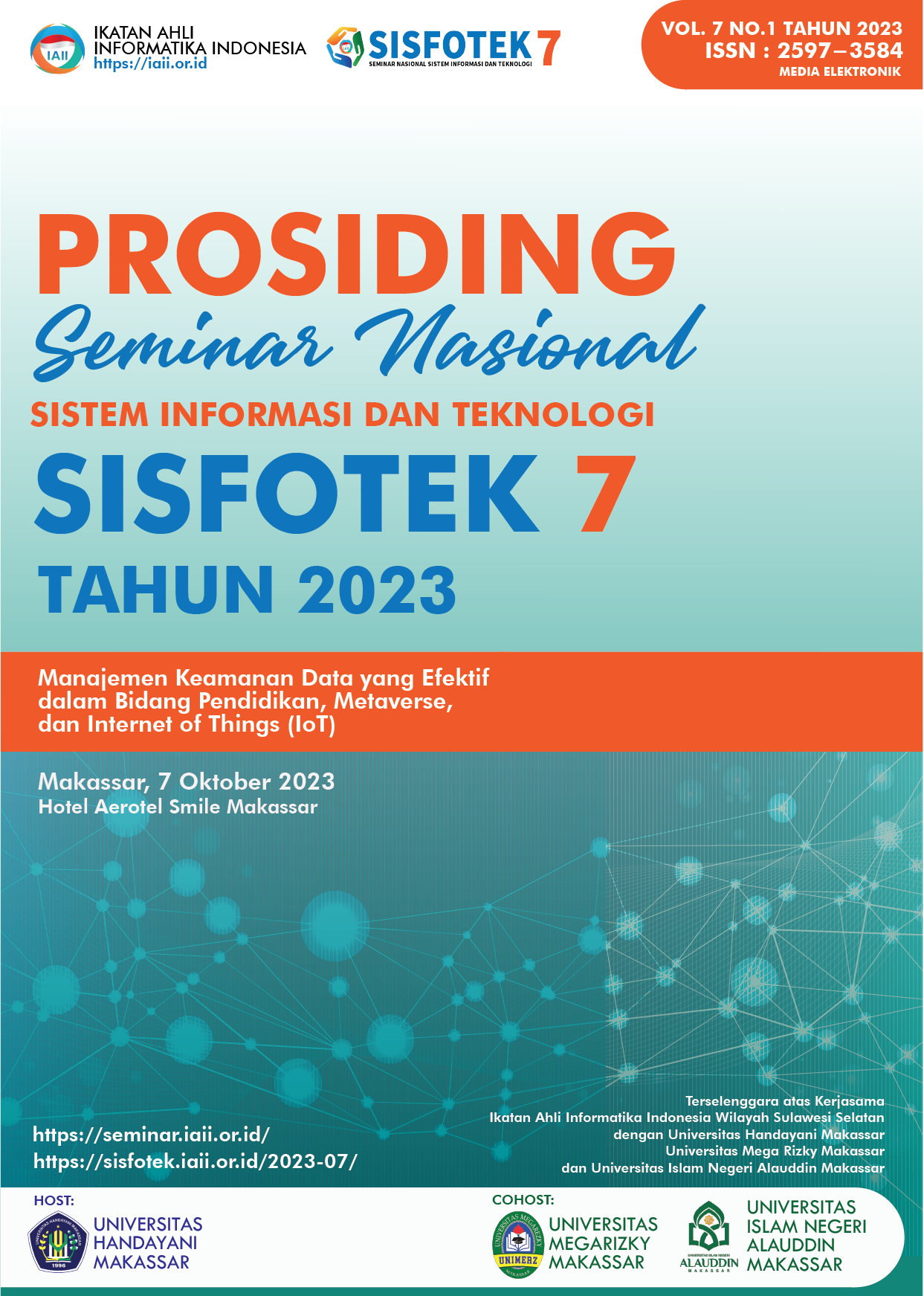Sistem Informasi Modeling Kawasan Rawan Longsor Berbasis 3 Dimensi
Keywords:
drone, Photogrammetry, Information, Avalanche, 3DimensionalAbstract
The high level of losses experienced by the community caused by natural disasters is due to the lack of information obtained by the community about possible disasters that occur around it. In dealing with disasters can be done by utilizing various kinds of the latest technology such as the use of drone technology for data collection that can reach disaster areas. The purpose of this study is to model the information system of landslide-prone areas from drone photos in 3 dimensions. . The method used is photogrammetry by taking ortho photos using a mavic 2 pro type drone and secondary data of the soil layer from sondir at the location of Sapaya road, Bungaya District, Gowa Regency, South Sulawesi. The results are known that from 3-dimensional modeling it can be seen that the soil contour and the degree of slope for each area at the location are between 320 – 520 with a safe factor value below 1. Furthermore, it also appears that the location of rainwater flows can be a trigger factor for landslides so that this information can be the initial data in increasing awareness of potential landslide disasters.
References
Muntohar, a. S. (2010). Tanah longsor: analisis-prediksi-mitigasi. Universitas muhammadiyah yogyakarta.
Ramkrishnan, r., karthik, v., unnithan, m. S., kiran balaji, r., athul vinu, m., & venugopalan, a. (2017). Stabilization of seepage induced soil mass movements using sand drains. Geotechnical engineering, 48(4), 129– 137.
Hamida, F. N., & Widyasamratri, H. (2019). Risiko kawasan longsor dalam upaya mitigasi bencana menggunakan sistem informasi geografis. Pondasi, 24(1), 67-89.
Bnpb, (2020). Data informasi bencana indonesia tahun 2020. Bnpd.cloud/dibi/laporan5a.
Santius, S. H. (2015). Pemodelan tingkat risiko bencana tsunami pada permukiman di Kota Bengkulu menggunakan sistem informasi geografis. Jurnal Permukiman, 10(2), 92-105
Guglielmo Rossi. (2018). Multitemporal UAV surveys for landslide mapping and characterization. Tuscany, Italy
Rafli, M. (2019). Pemodelan 3d Daerah Ancaman Banjir Menggunakan Sig Di Sekitar Ciliwung, Kecamatan Tebet. Makara.J.Sci. researchnght. Net
Ahyar, I. Z., & Suhendra, A. (2017). Visualisasi Grafik Tiga Dimensi (3d) Untuk Informasi Pada Simulasi Aliran Air Berdasarkan Perhitungan Metode Smoothed Particle Hydrodynamics (SPH). Jurnal Ilmiah Informatika Komputer, 21(3).
Hadi, b. S. (2007). Dasar-dasar fotogrametri. In dasar dasar fotogrametri. Fakultas ilmu sosial dan ekomomi universitas negeri yogyakarta.
Zayd, r. A. (2015). Analisis bencana tanah longsor dengan menggunakan uav-photogrammetry ( studi kasus : desa ngrimbi , kabupaten jombang )
Muhammad, F., Hadi, A., & Irfan, D. (2018). Pengembangan Sistem Informasi Panduan Mitigasi Bencana Alam Provinsi Sumatera Barat Berbasis Android. Jurnal Teknologi Informasi dan Pendidikan, 11(1), 27-42
Souisa, m., hendrajaya, l., & handayani, g. (2018). Analisis bidang longsor menggunakan pendekatan terpadu geolistrik, geoteknik dan geokomputer di negeri lima ambon. Indonesian journal of applied physics, 8(1), 13. Https://doi.org/10.13057/ijap.v8i1.15482[13] Mabrur, A. Y., Arafah, F., Agustina, F. D., & Suganda, L. T. (2023). Pembuatan Peta 3D Urban Model Untuk Visualisasi Dampak Banjir. Faktor Exacta, 15(4), 243-251
Setyanto, zakaria, a., & permana, g. W. (2016). Analisis stabilitas lereng dan penanganan longsoran menggunakan metode elemen hingga plaxis v.8.2. Jurnal rekayasa, 20(2), 119–138.
Downloads
Published
How to Cite
Issue
Section
License
Copyright (c) 2023 Seminar Nasional Sistem Informasi dan Teknologi (SISFOTEK)

This work is licensed under a Creative Commons Attribution 4.0 International License.
http://creativecommons.org/licenses/by/4.0







